BROWNING'S PLATYSCOPIC MAGNIFIER
MAKER: JOHN BROWNING
c. 1910
Although before 1875 John Browning had sold simple lenses and Coddington Magnifiers, in 1875 he started to market and sell a unique group of aplanatic, achromatic triplet magnifiers in this form of casing which he called his 'Platyscopic Magnifier'. These were likely made to the design of the German inventor Steinheil who first made these in 1864. This tiny example, is his highest power, and measures only about an inch (25 mm) in greatest dimension when closed. Open it is 1 1/2 inches (38 mm) long. It is little more than half an inch (14 mm) high. The lens casing has a 5mm diameter. The purse-like case measures about 2 X 1 inches (25 x 50 mm)measured from the tips of the clasps to the far end. The outer casing is made of high quality tortoise shell, the lenses mounted in Ebonite (hard rubber). The outer 'tortoise shell' casing is less than 1 mm thick. It is signed in gold letters on one side: 'BROWNING'S PLATYSCOPIC LENS' and on the other: '146.STRAND.LONDON'. This is a 30 power instrument, and has a field of view of only about 2 mm. This small field of view may be related to the partial decementing of the optics at the edges of the lenses, because Browning claimed the field of view to be much larger than this (see chart in the ads below).
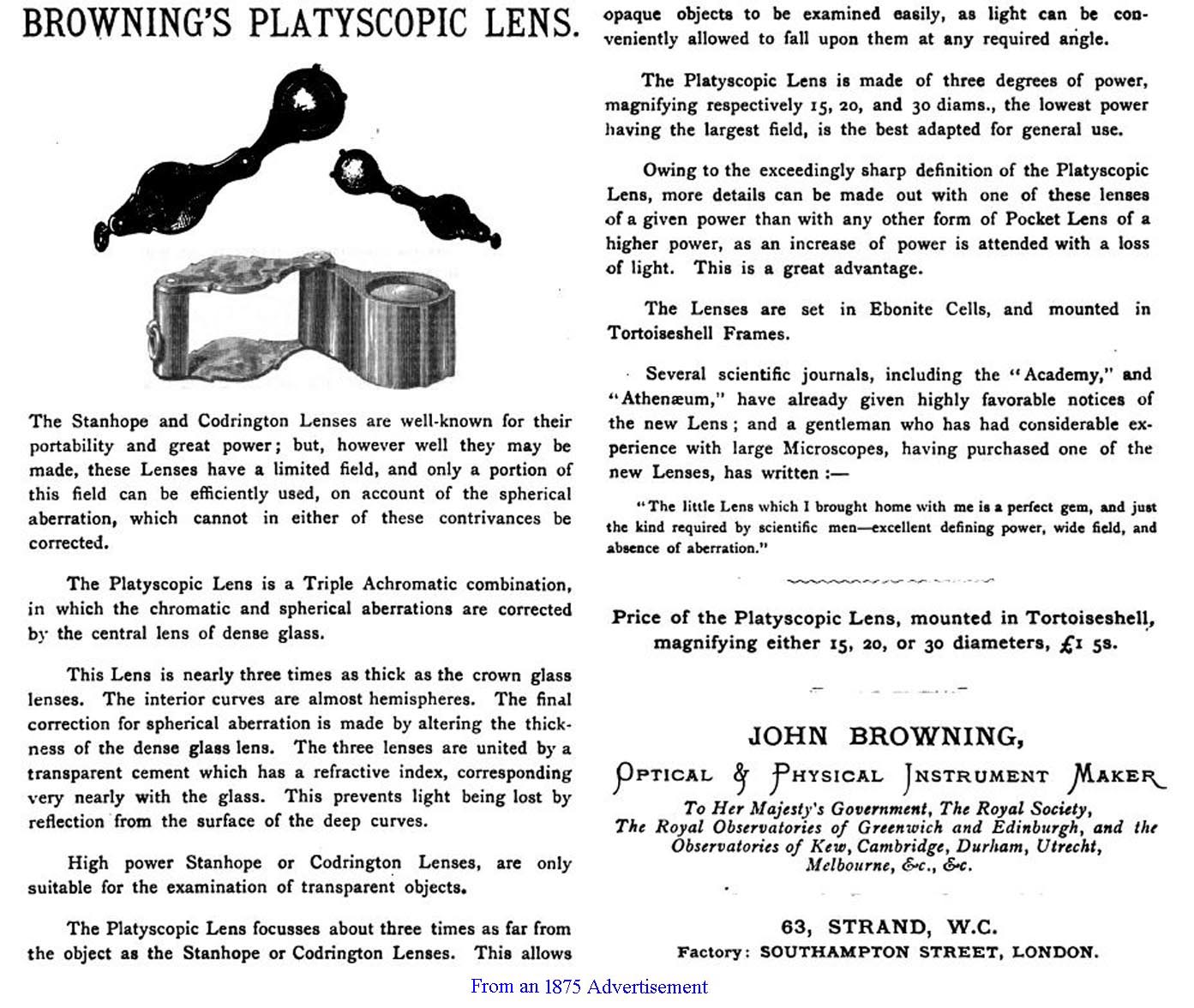
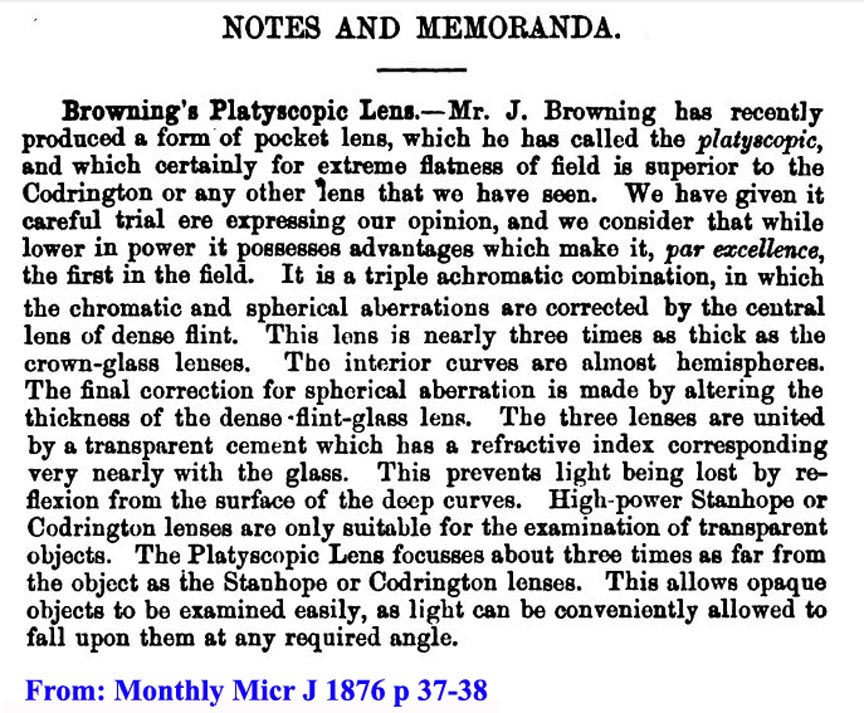
The 'platy' was initially offered in three powers. These were 15, 20, and 30. The outer casing was made of 'tortoiseshell' while the lens was housed in hard rubber, also known as 'Ebonite'. The Browning Platyscopic magnifier was first noticed in the Monthly Microscopical Journal of 1876.
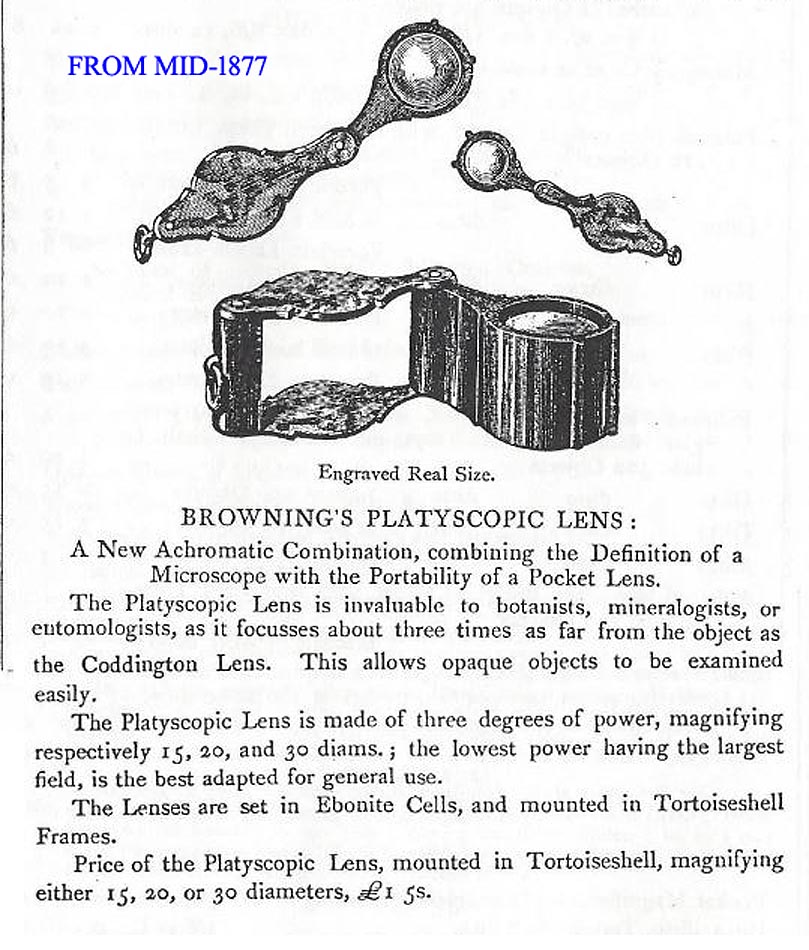
In the early years of production the instrument was only available in its original form, the three original magnifications, and in its original tortoiseshell casing.
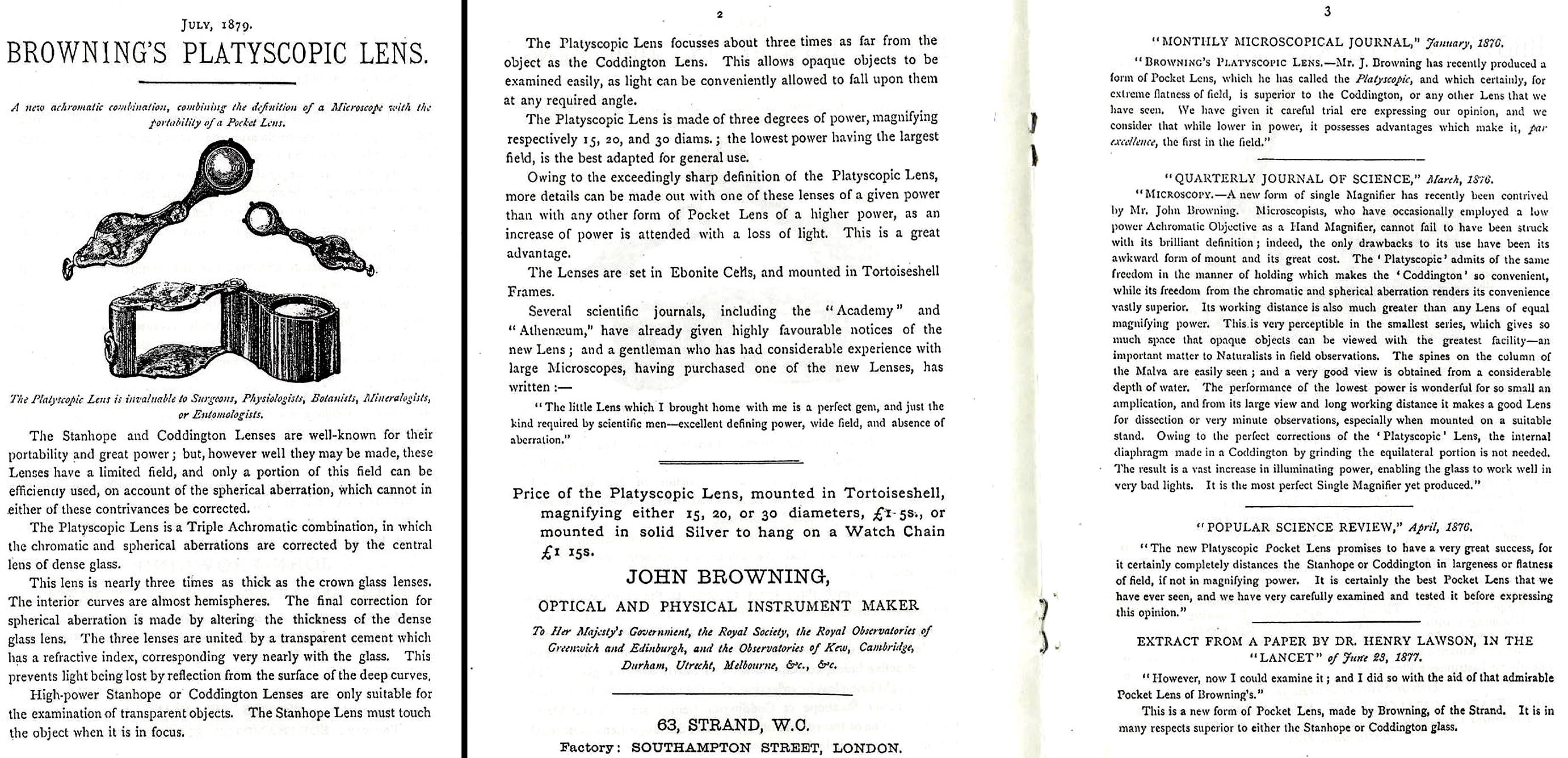
By 1879 the 'platy' could be ordered in the original 'tortoiseshell' casing or in pure silver. It was still offered in only the three original magnifications.
In 1881, it was announced in the JRMS that Browning had added the 10X magnification to his offerings.
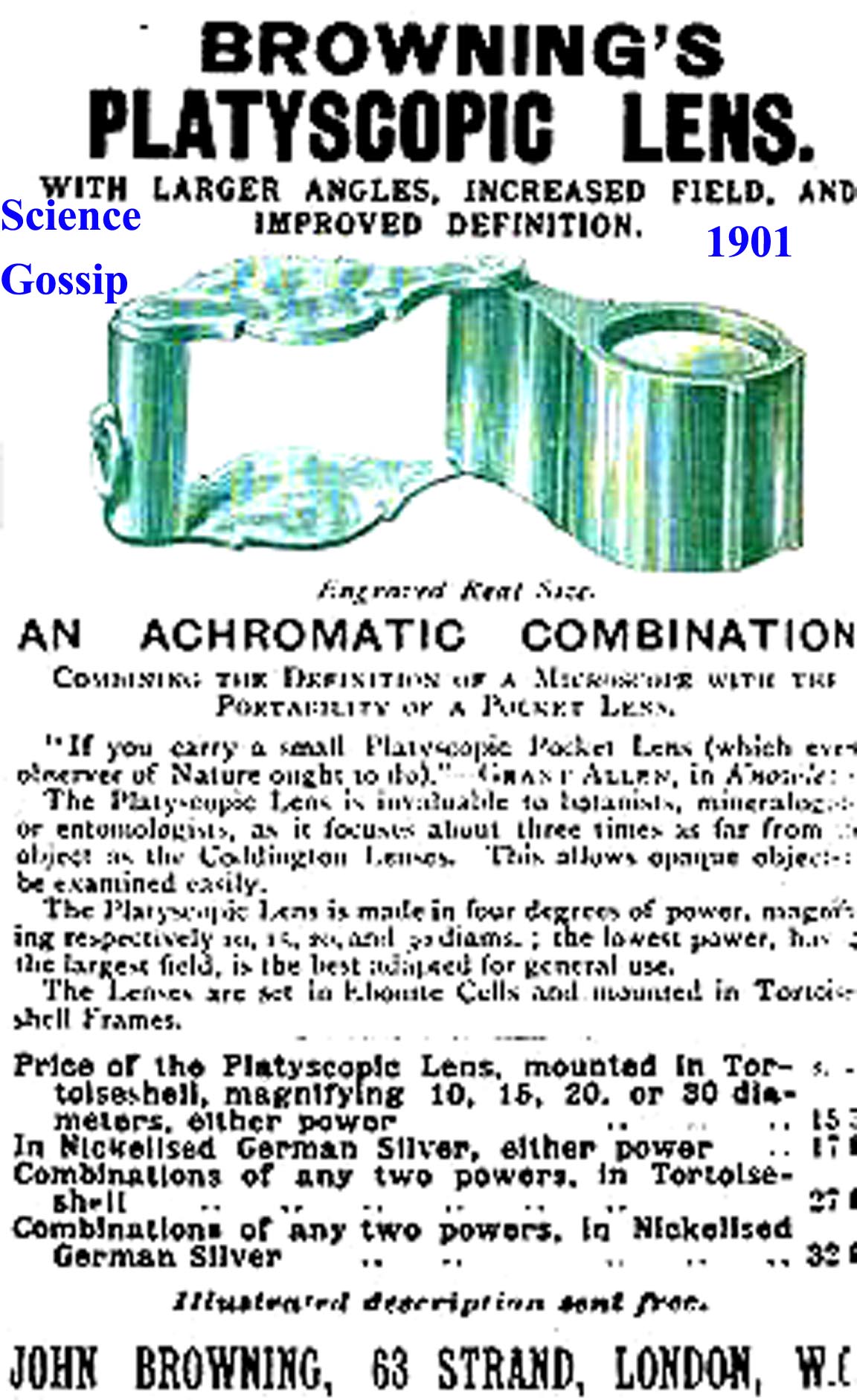
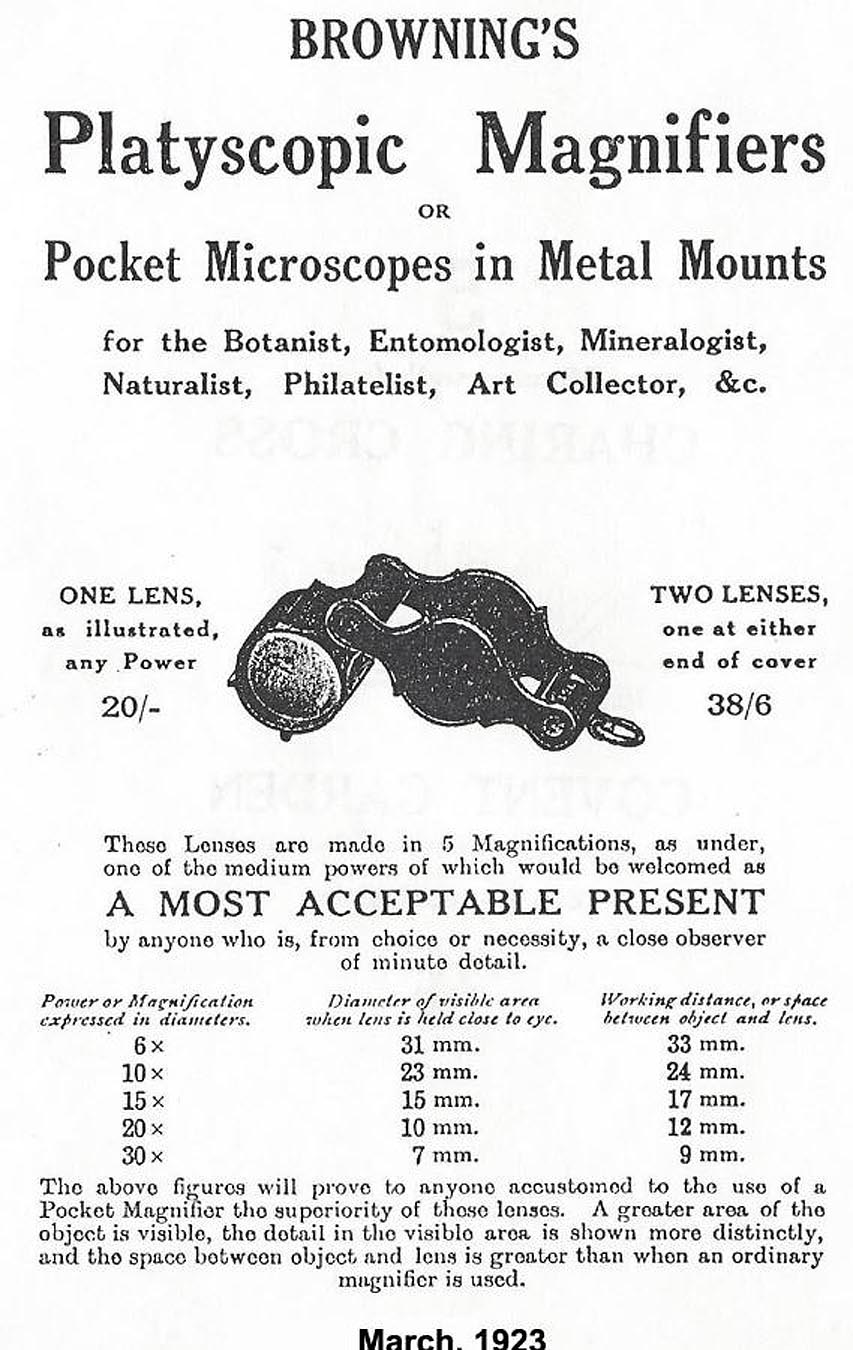 By 1901, Browning was also offering these in a German Silver casing, and with an option to have two different magnifications in a single instrument, one on each end. He also started to offer one lower power, now recommended for general use, the 10X. Today a 10X magnifier is the most common power loupe used. After 1903 he recommended the German Silver casing as more durable.
By 1901, Browning was also offering these in a German Silver casing, and with an option to have two different magnifications in a single instrument, one on each end. He also started to offer one lower power, now recommended for general use, the 10X. Today a 10X magnifier is the most common power loupe used. After 1903 he recommended the German Silver casing as more durable.
In Browning's 1923 offering(right), there were now five different powers, including the 6X, and by then they were only offered in 'metal mounts.' The aplanatic achromatic magnifier was invented by Steinheil in Germany in 1864. According to Davis (1889), this design of aplanatic loupe was introduced to England in 1872 and by 1889 similar aplanatic loupes were made by Zeiss, and Miller of New York. The German lenses were cased in metal and were available in a 'loupe' design or with a folding case. Watson was selling their own triplet magnifiers by no later than 1893.
An example of a lower magnification model from the 4th quarter of the 19th century is also on this site.
OUTLINE OF THE JOHN BROWNING BUSINESS:
-John took sole control of the business in 1856
-1 Norfolk Street, Strand, London (1866)
-111 Minories, London (1868-c. 1876)
-6 Vine Street, London (1868-1875)
-63 Strand, London (1872-1901)
-Exeter Street (factory 1878- ?date)
-7 Southampton Street (factory c.1878-1880s?)
-In 1900 Watson & Son Ltd bought out Browning, but he remained with the company until 1905 when he retired. Despite Browning's departure, and Watson's ownership, the Browning name was retained through 1945.
-146 Strand, London (1901-1914 or later)
-37 Southampton Street, London (Known address at least 1922-23)
-188 Strand, London (c. 1923-1945?)
The author is indebted to Dr Joe Zeligs for providing many of the ads and catalog entries of the Browning Platyscopic Magnifier found on this web page.





 By 1901, Browning was also offering these in a German Silver casing, and with an option to have two different magnifications in a single instrument, one on each end. He also started to offer one lower power, now recommended for general use, the 10X. Today a 10X magnifier is the most common power loupe used. After 1903 he recommended the German Silver casing as more durable.
By 1901, Browning was also offering these in a German Silver casing, and with an option to have two different magnifications in a single instrument, one on each end. He also started to offer one lower power, now recommended for general use, the 10X. Today a 10X magnifier is the most common power loupe used. After 1903 he recommended the German Silver casing as more durable.